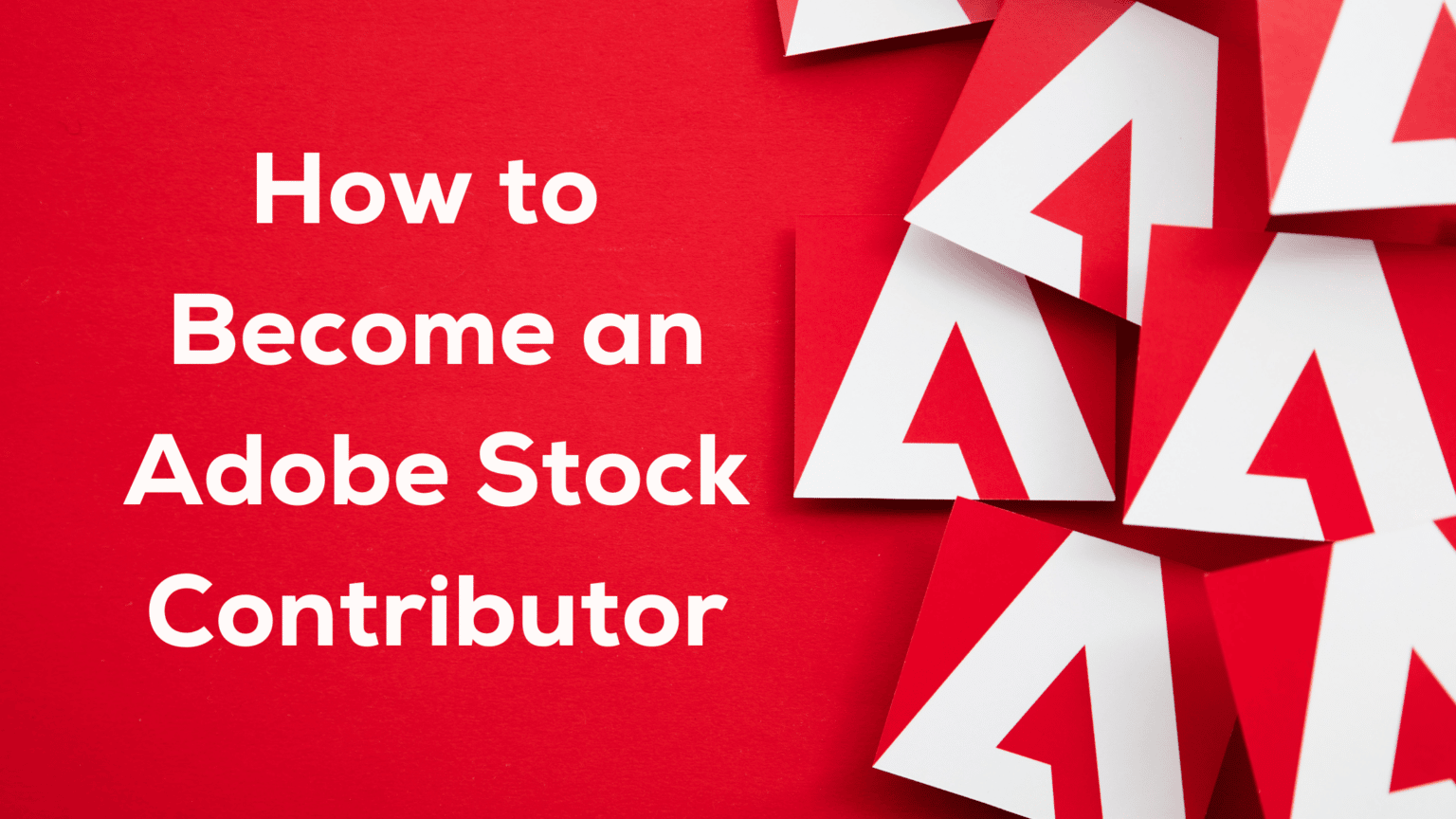Adobe Stock is a fantastic platform that connects creatives, businesses, and designers with high-quality visual content. Launched in 2015, Adobe Stock allows users to buy and sell a wide variety of assets, including photos, videos, illustrations, vectors, and templates. This service is integrated with Adobe Creative Cloud applications, making it incredibly convenient for users who already rely on tools like Photoshop, Illustrator, and Premiere Pro.
As a contributor, you have the opportunity to showcase your talent to a global audience. Whether you’re a professional photographer, a budding illustrator, or even a videographer, Adobe Stock provides a seamless way to monetize your creative work. With millions of users and a steady demand for fresh content, the possibilities for exposure and income are immense. Once you upload your work to Adobe Stock, it’s available for purchase by customers all over the world, giving you an exciting platform to let your creativity shine.
Benefits of Contributing to Adobe Stock

When considering becoming an Adobe Stock contributor, the benefits are numerous and can introduce you to a world of opportunities. Let’s dive into some of the key perks:
- Monetization of Your Work: Selling your photos and illustrations allows you to earn passive income. Every time someone purchases your content, you receive a royalty payment, which can add up over time.
- Global Exposure: Your work is showcased to millions of potential buyers worldwide. This not only helps you to build credibility but can also lead to more sales as your designs or photos get noticed.
- Integration with Adobe Creative Cloud: If you’re already using Adobe products, the integration allows for a smooth workflow. You can upload directly from software like Lightroom, making the process easier than ever.
- Creative Control: You retain ownership of your content and can continue to sell it on various platforms, making your work as versatile as you want.
- Community and Resources: Adobe Stock provides a community of fellow creatives and a wealth of resources to help you improve your work and understand market trends.
With these advantages, contributing to Adobe Stock opens up pathways not just for income, but for growth and collaboration in the creative field.
Also Read This: Remove the ‘Open to Work’ Badge from LinkedIn with This Quick Guide
Getting Started: Creating an Adobe Account
So, you're ready to jump into the exciting world of Adobe Stock contribution? Awesome! The very first step is to create an Adobe account. It’s a breeze, and I promise you’ll be up and running in no time!
Here’s a quick guide to help you through the process:
- Visit the Adobe Sign-Up Page: Go to the Adobe website and look for the sign-up option. You might find it under “Sign In” where you can also toggle to “Create an account.”
- Fill Out Your Details: You’ll need to enter some basic information. This includes your name, email address, and password. Make sure to choose a password that’s both strong and memorable.
- Email Verification: Once you submit your details, Adobe will send you a verification email. Check your inbox and click on the link to verify your account.
- Complete Your Profile: After verification, log in to your account. You can complete your profile by adding additional details. This part is important, especially if you want to make your portfolio stand out!
- Explore the Dashboard: Once you’re in, take a little time to familiarize yourself with Adobe’s interface. This dashboard will be your hub for uploads, sales tracking, and managing your portfolio.
And just like that, you’re all set! You now have an Adobe account that will open doors to a whole new world of photography and creativity.
Also Read This: An Easy Method to Download Video from Private Facebook Group
Understanding Adobe Stock Submission Guidelines
Alright, you've set up your Adobe account, and now it's time to focus on submitting your work. But wait! Before you dive in headfirst, it’s crucial to get a handle on the submission guidelines. Trust me, knowing these will save you time and a bit of frustration.
Here’s a rundown of the key submission guidelines you should keep in mind:
- Content Type: Adobe Stock accepts photos, graphics, videos, and templates. Ensure that your content fits into one of these categories.
- Quality Standards: High-resolution images are a must. For photos, aim for at least 4 MP. Make sure there’s no noise, blurriness, or overexposure.
- Restrictions: Avoid submitting content that is copyrighted, defamatory, or contains sensitive material. This includes images with recognizable faces unless you have model releases.
- Metadata: Pay attention to your titles, keywords, and descriptions. The better your metadata, the easier it’ll be for potential buyers to find your work!
- Exclusivity: If you're uploading your work exclusively to Adobe Stock, you might enjoy higher revenue shares. Just something to think about!
Following these guidelines will not only help you get accepted faster but also enhance your chances of making sales. Review these points carefully, and make sure to stay updated on any changes Adobe might roll out. Happy submitting!
Also Read This: Understanding Getty Images Stock Photo Costs and Licensing Fees
5. Preparing Your Content for Submission
Before you dive into the world of Adobe Stock submitting, it’s crucial to ensure your content is polished and meets the platform’s guidelines. This step can make a significant difference in how your work is received!
Here's a checklist to keep in mind:
- Quality Matters: Ensure your images and videos are high-resolution. Aim for at least 4 MP for photos and 1080p for videos.
- Editing: Use image editing software to correct colors, crop images, and remove any distractions that may affect the viewer's focus.
- Metadata: Prepare titles, descriptions, and keywords for your submissions ahead of time. This metadata will help your work be found by the right audience.
- Model Releases: If your content includes recognizable people, you’ll need to secure a model release form. This is a legal document that grants you permission to use their likeness.
- Property Releases: For any property that is identifiable (like a branded product or a private building), ensure you have a property release to protect yourself legally.
Lastly, keep Adobe’s guidelines handy. Familiarize yourself with their content standards to avoid unnecessary rejections. This is a foundational step that can set you up for success!
Also Read This: Experience This Tool to Download TED Talk Intro Video
6. Steps to Upload Your Work
Now that your content is prepped, it’s time to get it onto Adobe Stock! The uploading process can seem daunting, but it’s straightforward when broken down into manageable steps.
Here’s how you can upload your work:
- Create an Adobe Account: If you haven’t already, create an Adobe ID. This allows you to access Adobe Stock and all other Adobe services.
- Navigate to Contributor Portal: Go to the Adobe Stock Contributor portal (stock.adobe.com/contributor). Sign in with your Adobe ID.
- Start the Upload: Click the “Upload” button. You’ll be prompted to select files from your computer. You can upload multiple files at once!
- Add Metadata: For each uploaded item, you’ll need to fill in fields for title, description, and keywords. Make sure to use relevant keywords that depict your work accurately.
- Submit for Review: Once you’re all set with the metadata, review everything carefully and then submit your content for Adobe’s review.
- Wait for Approval: Your uploads will go through an approval process, which may take a few days. You’ll be notified via email whether or not your work has been accepted.
And just like that, you’re on your way to becoming a successful Adobe Stock Contributor! Remember, each submission is a stepping stone towards improving your skills and portfolio.
Also Read This: How to Sell Photos on Getty Images – A Complete Guide for Aspiring Photographers
7. Tips for Successful Contributions
Becoming a successful contributor on Adobe Stock isn’t just about uploading images. It’s about understanding what sells, how to showcase your work effectively, and navigating the platform wisely. Here are some handy tips to help you hit the ground running!
- Quality Over Quantity: Always prioritize high-quality images. Stock images should be sharp, well-composed, and color-corrected. High-resolution files are a must!
- Know Your Audience: Research popular themes and styles on Adobe Stock. This could include lifestyle shots, nature photography, or business-related images. Focus on creating content that is in demand.
- Use Descriptive Keywords: When uploading your images, take the time to use effective keywords. This helps potential buyers find your work. Think about what someone searching for your image might type into the search bar.
- Consistent Branding: Consider developing a unique style that people can recognize. This helps build a brand around your work, making it easier for customers to associate quality with your portfolio.
- Stay Updated: Trends in stock photography change rapidly. Follow industry blogs and Adobe Stock updates to stay in the loop about what's current.
- Diversify Your Portfolio: Don't limit yourself to one style or subject. By offering a variety of images, you increase your chances of making sales.
- Engage with the Community: Join forums and social media groups where fellow contributors share their experiences. Not only can you learn from others, but you can also gain insights into best practices.
Also Read This: How to Sell Photos on Getty Images and Maximize Your Earnings
8. Tracking Your Sales and Earnings
Once you’ve started contributing to Adobe Stock, tracking your sales and earnings becomes crucial for evaluating your performance and success. Here’s how you can effectively manage this aspect of your stock photography journey:
- Use Adobe’s Contributor Dashboard: Your dashboard is your best friend! It provides comprehensive analytics on your sales, earnings, and even the performance of individual images. Make sure you check this regularly.
- Monitor Your Bestsellers: Keep track of which images are making the most sales. Understanding what resonates with buyers can guide your future contributions.
- Analyze Trends: Look for patterns in your sales over time. Are there certain times of the year when your sales spike? Recognizing these trends can help you prepare your contributions accordingly.
- Set Goals: Having specific goals — like a certain number of sales per month or a target income — can motivate you to create and upload more. Track your progress against these goals.
- Engage with Feedback: If you receive feedback or reviews on your images, take it to heart. This can help you refine your future contributions and boost your sales.
- Understand Payment Methods: Familiarize yourself with Adobe Stock’s payment policies and methods. Knowing when and how you’ll get paid gives you peace of mind.
By keeping an eye on your performance and understanding your audience, you can better navigate your journey as an Adobe Stock contributor.
Also Read This: Understanding YouTube Blurriness and How to Fix Video Quality Issues
Common Mistakes to Avoid as a Contributor
Becoming an Adobe Stock contributor is an exciting journey, but like any venture, it comes with its pitfalls. Avoiding common mistakes can set you on the path to success and ensure your work gets noticed. Here are some errors to steer clear of:
- Poor Quality Images: Submitting low-resolution or poorly composed images can lead to rejections. Always ensure your work meets Adobe's quality standards.
- Ignoring Metadata: Failing to add keywords, descriptions, or titles can hurt your visibility. Metadata is crucial for helping potential buyers find your content.
- Neglecting Licensing Agreements: Be sure you understand licensing terms. Submitting content that infringes on copyright can lead to permanent bans from the platform.
- Overlooking Trends: Not keeping up with market trends can render your submissions irrelevant. Research what’s popular and current to enhance your chances of sales.
- Inconsistent Style: Having a haphazard style can confuse buyers. Aim for a consistent aesthetic in your portfolio; this helps buyers know what to expect from you.
- Not Engaging with Community: Ignoring the community aspect of being a contributor can limit your growth. Network and learn from other contributors, as sharing experiences can lead to new insights.
- Submitting Too Much or Too Little: Bombarding the platform with too many images at once can overwhelm reviewers. Conversely, submitting too few limits your exposure. Find a balanced approach.
By being mindful of these common pitfalls, you can significantly enhance your chances of success as an Adobe Stock contributor. Stay focused, organized, and always strive for improvement!
Conclusion and Next Steps
In conclusion, becoming an Adobe Stock contributor can be a rewarding endeavor whether you’re an aspiring photographer, graphic designer, or videographer. You’ve got the tools and knowledge to start, but what’s next? Here’s a quick guide to help you take those next steps:
- Evaluate Your Portfolio: Take a close look at your current work. Ensure that it aligns with Adobe Stock’s quality and style guidelines.
- Sign Up: Ready to dive in? Create an Adobe ID and register as a contributor. The sign-up process is straightforward and user-friendly.
- Upload Your Best Work: Start with a few high-quality images that showcase your style. Pay special attention to metadata to maximize visibility.
- Stay Educated: Keep learning about photography and trends in stock content. Adobe offers a range of tutorials and resources.
- Engage with the Community: Don’t forget to connect with other contributors. Join forums and social media groups to share experiences and tips.
- Monitor Your Performance: Once you start uploading, use the analytics tools Adobe provides. Understand which pieces perform well and adjust your strategy accordingly.
Remember, success won’t happen overnight. Be patient, persistent, and most importantly, stay creative! With dedication, you’ll find your niche in the vast marketplace of Adobe Stock.
 admin
admin








